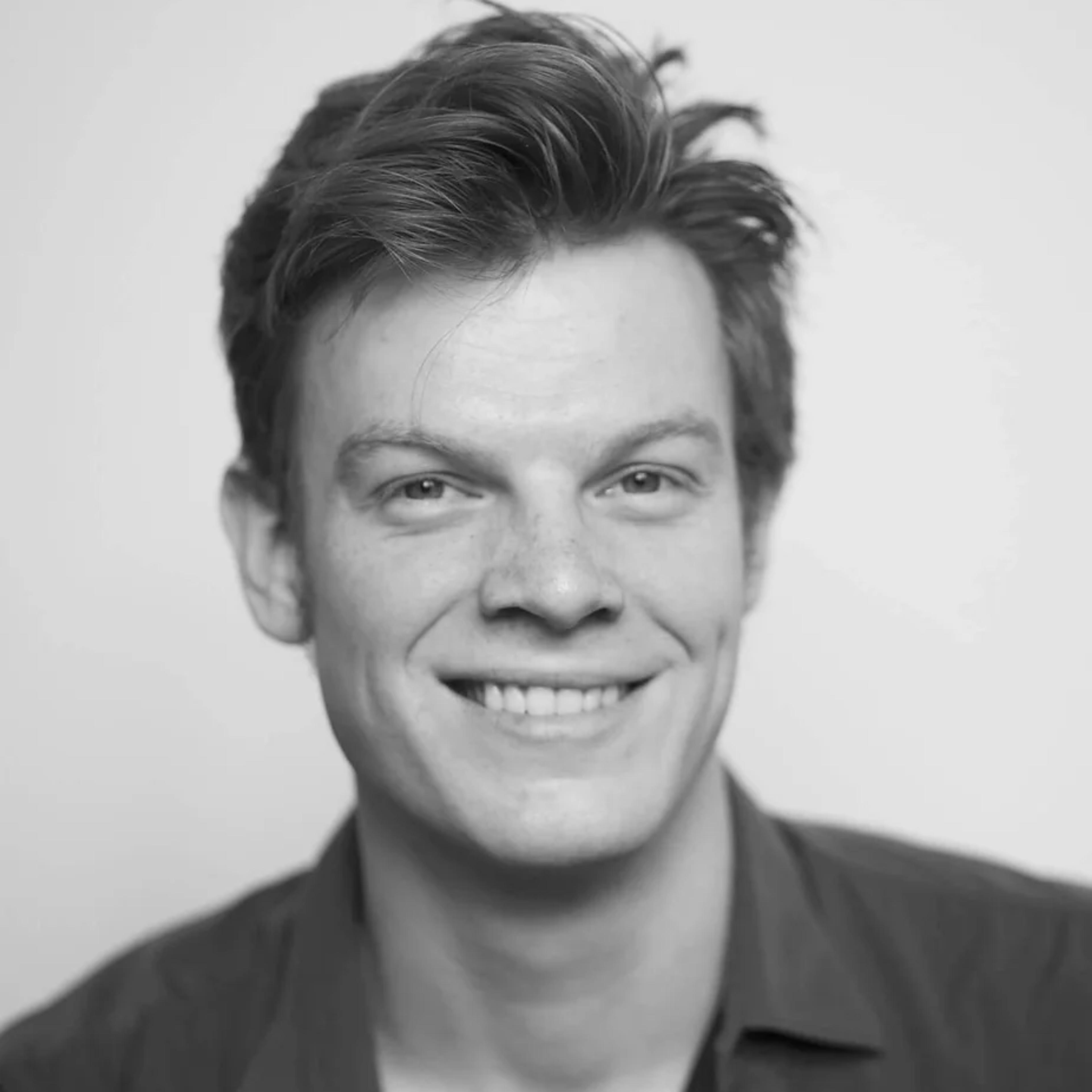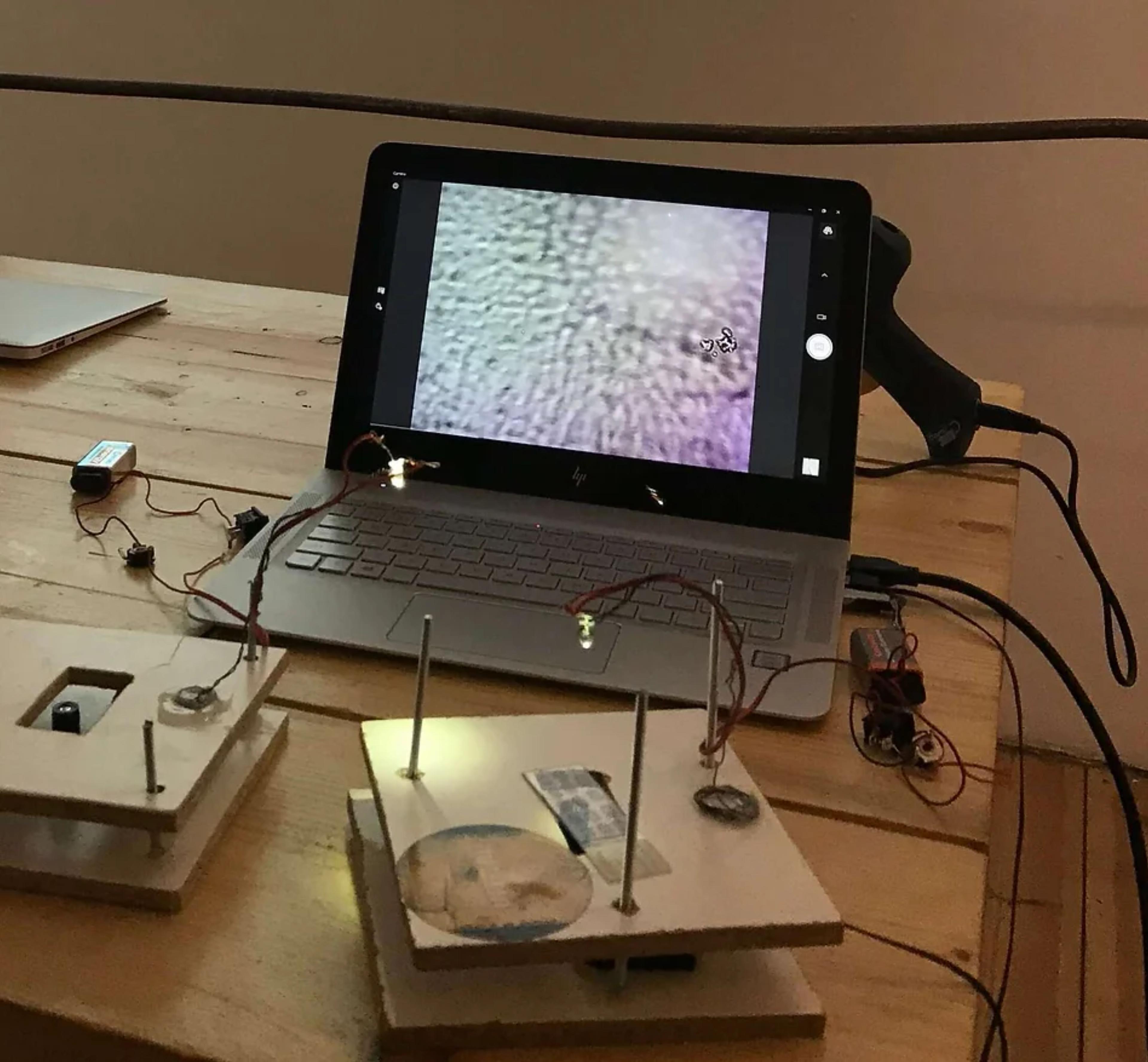Conversation
Ian Stewart
"Art is an excellent mediator to shaping the narrative of the future."

Ian Stewart is a PhD researcher at The Max Delbrück Center for Molecular Medicine (MDC) Berlin, and focuses his research on complex systems which affect human life and the environment.
He cofounded Edge neuroscience & art e.V., a non-profit group of international artist-scientists, exploring intersections between art and neuroscience. The association's mission is to support and develop ideas merging politics, environment, economics, and technologies; more widely, to advocate for humanisation of digital technologies through the interplay between digital, biological and cultural.
In 2019, he was advisor to INSIGHT, a European event in practical and science-based psychedelic therapies, dedicated to mental health professionals and practitioners. As an artist, he also produced installations and audio artworks while studying in Sydney, London, and Berlin.

MADELEINE SCHWINGE: Can art enhance social change, what role could artists and their work play in this? Could one even consider a leading role?
IAN STEWART: Certainly art and culture are a mirror of social circumstance - one in which movement of either subject or reflection will affect the other. It is up to artists to consider how the development of art and culture can be directed to achieve positive social change.
But before we can consider a leading role for art and culture, we have to think about who is affected by or aware of the art. We think about this a lot at EDGE - how can we be inclusive in our message and content? We are motivated by sharing the beauty of, and knowledge about, that which we all share - a brain - with everyone. This is not only to consider how social change can be achieved by our art, but also to prepare culture and people for the social change that is coming with further neuroscience.
MS: In the face of the radical upheavals and crises of our time, may we even dare to hope for a better future? What effect could narrative have on the process to shape such a future?
IS: Perhaps it is an empiricist/technologist view, but hoping for a better future seems still a natural conclusion of a historical perspective. The progress of human development has, over a long timescale, improved quality of life and our understanding of our universe and planet. While there is a lot of work correcting previous mistakes and adapting to upheavals in human society, we are at least better equipped for (attempts at) a more harmonious existence. 100 years of neuroscience have taken us from little idea of how conscious intelligent life functions to medical and psychological advances, though barbaric lobotomies along the way prove the path is rocky and includes mistakes. Still, cultural and scientific development will continue to shape a positive future - one with more capabilities and responsibilities in the hands of individuals and society.
To live up to this responsibility and ensure just and fair development, transparency is key. This is where artists (and others) take a critical role in shaping the future, by developing and sharing discussion and narration of the changing human condition, and the capabilities and implications of new knowledge. Mediators are needed between technical progress and people of all backgrounds, to ensure that the perspectives of many are included in shaping the narrative of the future. EDGE thinks that art is an excellent mediator in this sense.
MS: What might be the impulses of a transdisciplinary dialogue between art and other disciplines to catalyse social transformation? Which fields of expertise could be fruitful for your own work?
IS: A dialogue for social transformation must be contemporary, transparent, inclusive and explorative. We would also argue that it be optimistic while critical, and focus on topics and fields with high potential for affecting human society. Neuroscience will deliver fundamental changes to our understanding of self and our relationships with each other and with technology. To direct this toward positive social change, it will be important to be relatable, and to communicate with honest intention. We hope that social studies to support communication, and neuroaesthetics to help understand how art functions as a communicative medium, can support our practice.
MS: Assuming it would be possible to build a better world on the ruins of the old one, how could it look like? What do you wish for a better tomorrow?
IS: The fractured fields of expertise in society make it currently difficult to trust in advice. Collective action is hampered by suspicion, which is justified by an (ongoing) history of injustice and exploitation. I hope that we can become more empathetic and understanding, better versed in the various fields of expertise that people occupy, and better at communicating the rich details of individual ideas and knowledge. Transparency of information and earnest, inclusive sharing of intentions will let us work together for a better future, one in which we can trust in the knowledge of our neighbours.
MS: It is often said that a distinctive skill of artists is to seek the new, and always start from scratch on a blank paper. When you start a new project, what strategies or rituals do you personally use?
IS: There are similarities between artists and scientists in how to begin a project: the beginning is the question or intention. On a blank piece of paper, the web of possibilities can be drawn that ties capabilities and requirements together around the central motivation. That is my strategy: to look at what I want to achieve, look at what is around me, and in the space between these things form connections.
In the media. British Council, FameLab final Germany; Max Delbrück Center, Ian Stewart to compete in FameLab Germany final
Front Photo. © Florian Rau
Photo in the text. © DIY microscope at EDGE workshop, Ian Stewart